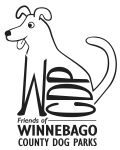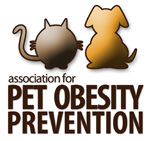(Published on petMD (http://www.petmd.com))
Regardless of location, the elemental tumult of fall (dying plant life, dryness, moisture, cooler temperatures, wind, etc.) stirs up environmental allergens and irritants that can affect the eyes, nose, skin, and other body systems of both people and animals.
Common clinical signs of allergies include:
- Nasal and eye discharge
- Sneezing
- Coughing
- Pruritis (itching/scratching, licking/chewing at body parts)
- Fur loss or color change (tears and saliva contain porphyrins, which stain light colored fur pink to brown)
The competent immune systems of most companion canines and felines will ultimately adapt to the seasonal changes, leading to the resolution of clinical signs. With animals that are not quite able to self-adjust, we pet owners must intervene with baths, conditioning rinses, eye/ear drops, oral or injectable medications (antihistamines, antibiotics, steroids, etc.), nutraceuticals (omega-3 fatty acids, antioxidant, etc.), or other treatments.
A pet’s ability to acclimate to environmental allergens is based on a variety of factors, including:
- Overall state of health (i.e., healthy vs. sick)
- Underlying diseases that compromise immune system function (cancer, immune mediated [i.e., autoimmune] diseases, Cushing’s disease, hypothyroidism, etc.)
- Immunomodulating medications (chemotherapy, steroids, etc.)
- Diet (whole versus processed food, protein and carbohydrate allergies, etc.)
- Degree of exposure (occasional vs. frequent)
- Others
Since so many factors can affect immune system health, the management of allergies can potentially be very complicated.
My top tips for holistically managing your pet’s seasonal allergies addresses both whole-body health and environment factors:
1. Keep your home low in allergenic potential. Vacuum all carpeting and upholstery and wash all pet and human bedding at least every seven days. After vacuuming, dispose of the vacuum bag or canister in a sealed away from your home.
2. Keep windows closed, use air conditioning during the warmer times, and run an air filtration system on a year-round basis.
3. Change filters on both heating and cooling systems as per manufacturer guidelines.
4. Bathe your pets every 7 to 30 days (once weekly to once monthly) or as per your veterinarian’s guidelines based on your pet’s skin and coat needs. Besides removing allergens and irritants from the skin and coat, bathing can have a variety of other effects including killing and removing bacteria and yeast, removing fleas and their saliva and feces (free dirt), and lifting off flaking skin.
5. Use an over-the-counter eye irrigating solution to rinse your pet’s eyes on an as needed basis.
6. Schedule a physical examination with your veterinarian and pursue recommended diagnostics at least every 12 months.
7. Commit to readily resolving or managing disease conditions, as inflammation associated with illness negatively impacts immune system health.
8. Use topical and oral anti-parasite (flea, tick, etc.) treatments as per the guidance of your veterinarian. My general recommendation is to lessen the need for these products by keeping your shared environment thoroughly and regularly cleaned.
9. Provide a moist, freshly prepared, whole food-based diet having human-grade protein, vegetables, fruits, fat, and fiber. Avoid ingredients that are lacking in protein and grain “meals and by-products,” artificial colors and flavors, moistening agents (propylene glycol, carageenan, etc.), sugar, rendered fat, and other feed-grade components (as typically go into commercially available dog and cat foods).
10. Maintain your pet’s slim Body Condition Score (ideally 3 out of 3) on a lifelong basis. Being overweight or obese causes unnecessary stress on all body systems and contributes to inflammation, which can have serious health implications.
You may also find some relief with an air purifier. I was fortunate to receive a sample Alen BreatheSmart Air Purifier for use in my home (Disclaimer: I was sent an Alen Air BreatheSmart unit for free but was not paid to include the product in this article). It came just in time for my seasonal household needs.

Cardiff with the air purifier
In addition to being fall in Los Angeles, we recently started a significant outdoor improvement project on our small deck space in West Hollywood that’s contributing to my allergies. Digging up trees and cutting down shrubbery aerosolized a variety of allergens that are currently getting into and mildly irritating both me and my dog’s eyes, nose, and respiratory tract.

Cardiff helps Phil dig up the bark yard for our future deck

All of this creeping fig came off of the wall
Through keeping windows and doors shut and regularly running the BreatheSmart Air Purifier, I’ve noticed an improvement in the eye and nasal irritation I’m experiencing. Cardiff’s tendencies to chew around his knees and scratch around his axilla (armpits) are also improving. Luckily, Cardiff has not been enduring eye and respiratory clinical signs like his daddy.
I hope that you and your pet have an enjoyable remainder of your fall filled with many quintessential experiences (leaf-pile diving, pumpkin picking, hay rides, etc.) experienced in a less-allergenic state.

Dr. Patrick Mahaney
Copyright © PetMD all right reserved. Privacy Policy

 The main parking lot for the trail is located off Westwind Road. The inset map shows the location of Westwind Road in relation to Highway 41 and 45. The distance to Ryf Road is 1.3 mi. Restricted to dogs on leash area.
The main parking lot for the trail is located off Westwind Road. The inset map shows the location of Westwind Road in relation to Highway 41 and 45. The distance to Ryf Road is 1.3 mi. Restricted to dogs on leash area.




